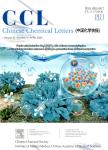A self-assembling peptide targeting VEGF receptors to inhibit angiogenesis
A self-assembling peptide targeting VEGF receptors to inhibit angiogenesis作者机构:Faculty of ChemistryNortheast Normal UniversityChangchun 130024China Laboratory for Biomedical Effects of Nanomaterials and NanosafetyNational Center for Nanoscience and Technology(NCNST)Beijing 100190China
出 版 物:《Chinese Chemical Letters》 (中国化学快报(英文版))
年 卷 期:2020年第31卷第12期
页 面:3153-3157页
核心收录:
学科分类:1002[医学-临床医学] 0703[理学-化学] 100214[医学-肿瘤学] 10[医学]
基 金:the National Natural Science Foundation of China(Nos.51890891,51725302,21807020,51573031 and 51573032) National Key R&D Program of China(No.2018YFE0205400) Science Fund for Creative Research Groups of the National Natural Science Foundation of China(No.11621505)
主 题:Self-assembly Peptide VEGF Angiogenesis Biomimetic
摘 要:Vascular endothelial growth factor(VEGF)-vascular endothelial growth factor receptor(VEGFR)pathways are essential in tumor angiogenesis,growth and *** on anti-angiogenic therapy have been mostly focused on the blockage of VEGF-VEGFR *** report an extracellularly transformable peptide-based nanomaterial to develop artificial extracellular matrix(ECM)-like networks for high-efficient blockage of natural VEGF-VEGFR *** transformable peptide-based nanomaterial transforms from nanoparticles into nanofibers upon binding to VEGFR in *** addition,the transformable peptide-based nanomate rial forms ECM-like fibrous netwo rks on VEGFR overexpressed cells,inhibiting the VEGF-VEGFR interactions and the subsequent *** tube formation is reduced by nearly 85.1% after *** strategy shows excellent potential for anti-angiogenesis,and inhibition of tumor invasion and metastasis.



